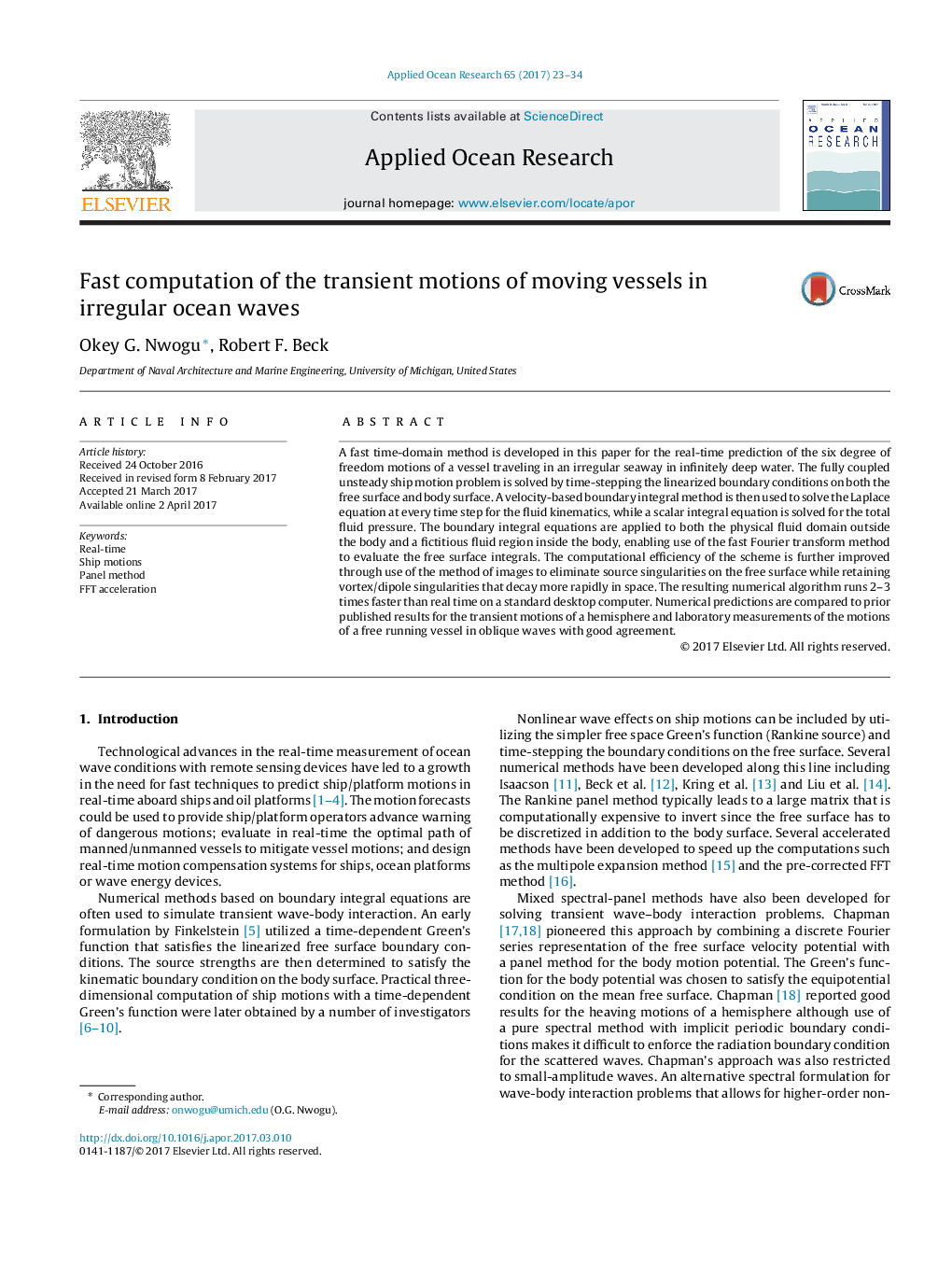| Article ID | Journal | Published Year | Pages | File Type |
|---|---|---|---|---|
| 5473297 | Applied Ocean Research | 2017 | 12 Pages |
Abstract
A fast time-domain method is developed in this paper for the real-time prediction of the six degree of freedom motions of a vessel traveling in an irregular seaway in infinitely deep water. The fully coupled unsteady ship motion problem is solved by time-stepping the linearized boundary conditions on both the free surface and body surface. A velocity-based boundary integral method is then used to solve the Laplace equation at every time step for the fluid kinematics, while a scalar integral equation is solved for the total fluid pressure. The boundary integral equations are applied to both the physical fluid domain outside the body and a fictitious fluid region inside the body, enabling use of the fast Fourier transform method to evaluate the free surface integrals. The computational efficiency of the scheme is further improved through use of the method of images to eliminate source singularities on the free surface while retaining vortex/dipole singularities that decay more rapidly in space. The resulting numerical algorithm runs 2-3 times faster than real time on a standard desktop computer. Numerical predictions are compared to prior published results for the transient motions of a hemisphere and laboratory measurements of the motions of a free running vessel in oblique waves with good agreement.
Keywords
Related Topics
Physical Sciences and Engineering
Engineering
Ocean Engineering
Authors
Okey G. Nwogu, Robert F. Beck,
